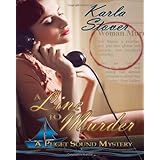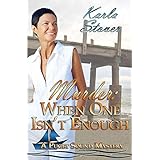I have written three
romance novels set in the reign of Queen Anne Stuart, 1702-1714. Tangled Love, Far Beyond Rubies and The
Captain and The Countess
Before I began the first
chapter of The Captain and The Countess, I became interested in how children
were raised and educated in the early 18th century. My research,
included a worthwhile visit to The Foundling Museum at 40, Brunswick Square,
London.
Childhood and Education. Boys
in early 18th century England.
When Queen Anne Stuart,
niece of Charles II, ruled from 1702 to 1714 attitudes towards children and
their education were very different to those in the 21st century.
Only one of Queen Anne’s
seventeen children, The Duke of Gloucester, lived for long. His wet-nurse, who
breast fed him, probably saved his life, for the fashion was to feed babies
with pap. This food was preferred by mothers too afraid of losing their figures
to suckle their infants.
The unfortunate little
duke suffered from water on the brain. He found it difficult to walk and go up
and down stairs without help. To cure him, the queen and his father, Prince
George of Denmark, shut themselves in a room with him. George thrashed him so
cruelly with a birch rod that from then on the child managed to ascend and
descend stairs unaided.
Fussed over by ladies at
court, and with boisterous children to play with, he drilled his company of boy
soldiers. He reviewed them on his eleventh birthday, after which he became ill
with scarlet fever that caused his death.
Few details are known
about the lives of poor, illiterate children, who probably followed in their
parents’ footsteps if they did not take advantage of charity schools. Boys
whose families could afford the fees became apprentices and learned a trade,
but not all of them were well-treated. Neither were the homeless waifs on the
streets who begged for food and money.
The Duke of Gloucester
was beaten, but what were children’s lives in well-to-do families like?
As it has been remarked,
‘they did things differently in those days’. New-born babies’ heads were bound,
they were swaddled and given an elixir, that in the days when people were
ignorant about hygiene might have added to infant mortality.
Relatives and friends
came every day to admire the infant. Henri Misson, an entertaining French
traveller, whose book was published in 1719, observed that babies were baptised
soon after birth. After the ceremony, wine and a special cake, only made for
christenings, was served. Papers of sweetmeats were given to the parson, for
his wife and children, and to the female visitors before they left.
In an age of impure
water, poor sanitation, smallpox and other diseases, infants were vulnerable.
Nurses dosed fretful infants with ‘DUFFY’S FAMOUS ELIXIR SALUTIS’. It was
advertised as ‘The Finest Exposed to Sale Prepared from the Best Drugges’, and
available from the Hand and Pen in Maiden Lane, Covent Garden, London, and many
other places in town and country.
Dr John Pechy studied
infants’ and children’s diseases. His cough mixture included horehound,
liquorice, hyssop and other ingredients including powdered woodlice. There were
medicines for worms and rickets. Teething was supposedly soothed with black
cherry water mixed with three or four drops of Spirits of Hartshorn.
Desperate parents must
have believed a necklace, which could be hired from Mr Larance’s in Somerset
House near Northumberland House in the Strand, could cure fits in children
caused by teeth or any other cause.
Probably, children in
well-to-do families were brought up in the nursery, and by their mothers, until
they were old enough to go to school.
Coral rattles with bells
amused infants. Little is known about boys’ toys but they had cardboard
windmills attached to sticks, and, possibly rocking horses.
Children had their own
books such as ‘A Play Book for Children’ to interest them as soon as they could
speak clearly. The pages were small but easy to read. The book cost four pence
and must have been popular because the second edition was published in 1703.
Children learned the
alphabet, both the lower and upper cases and the Lord’s Prayer from hornbooks,
which consisted of a small sheet of paper, 4 inches by three inches laid on a
flat piece of board with a handle. This was covered by a thin plate of horn
fastened to the board.
Young boys didn’t sit
exams and learn foreign languages. The advice given to The Mother in Steele’s Lady’s
Library, if carried out should have ensured their children would grow up to be
good men and women.
Boys enjoyed stories such
as ‘Jack and the Giants’ etc., Aesop’s fables, Guy of Warwick and St George of
England.
For older boys, tuition
was available, and day schools and boarding schools existed. Young gentlemen
learned English, French, Greek, Latin, Writing, Arithmetic, Geography etc.
Although French, High Dutch and Italian were taught, it was the Classical Age
and every gentleman was expected to be a good classical scholar.
In Queen Anne’s reign
there were many free schools and charity schools. In 1713 at a public
thanksgiving for peace, after the French were defeated in The War of Spanish
Succession, the charity children sat in tiered seats from which they could see
the queen go to St Paul’s Cathedral.
When I wrote The Captain
and The Countess I drew on my research, and enjoyed writing about my imaginary
Foundling Home based on fact.
* * *
https;//www.amazon.co.uk/The-Captain-And-The-Countess/ebook/dp/B01FCENLKE
https;//www.amazon.com/The-Captain-And-The-Countess
/ebook/dp/B01FCENLKE
Early 18th century novels by
Rosemary Morris
Tangled Love,
Far Beyond Rubies
Regency novels
False Pretences
Sunday’s Child Heroines born on different days of the week.
Book 1.
Monday’s Child Heroines born on
different days of the week. Book 2
Tuesday’s Child Heroines born on
different days of the week Book 3
www.rosemarymorris.co.uk
 3. It brings peace and serenity to our minds in a world full of . . . Comic Sans.
3. It brings peace and serenity to our minds in a world full of . . . Comic Sans.


















.jpg)

.jpg)




